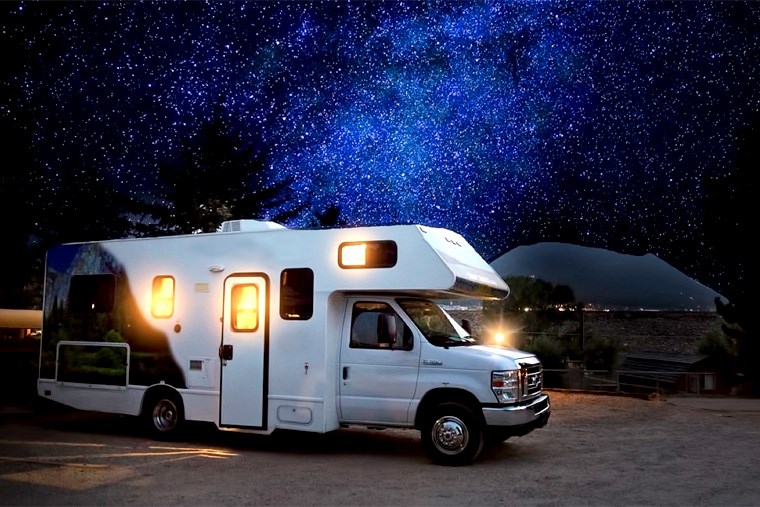In order to keep RV batteries ready to go when you are, there are a few things that you need to know.
Types of Batteries
Most towed RVs have two types of batteries and motorhomes have three. Generally, you will find a 120 volt AC system and a 12 volt DC system in any RV. Motorhomes also have a normal car battery.
There are two main types of RV batteries available:
- Deep cycle batteries
Deep cycle batteries are a lead-acid battery. These are the most common types of batteries that are found in RVs. Lead-acid batteries require routine maintenance and typically last around 400 cycles.
- Lithium batteries
Lithium batteries are less common because they cost about three times as much as a lead-acid battery. With that extra cost comes an extended lifespan (around 5000 cycles) and very little maintenance. Lithium batteries work well with solar panel systems.
Charging Your RV Batteries
Keeping RV batteries charged does more than just make sure that you have power when you want it. A well-charged battery also lasts longer and requires less maintenance.
While you are camping, your battery is recharging when it is connected to the campsite electrical outlet, if the generator is running, or when the towing vehicle or motorhome’s engine is running. Batteries should be charged very soon after they are used in order to reduce maintenance needs.
Both overcharging and undercharging RV batteries reduces its lifespan. Deep cycle batteries should be charged before they drop below 50% capacity and charged only until they are at capacity. Consider investing in a battery maintainer that uses a trickle charge to keep the battery at optimum levels.
Things like clocks, warning lights, gas leak detectors, antennae boosters, stereos, and appliances can use small amounts of power and quietly drain your battery. Check your battery charge manually using a volt metre, or install a battery metre that can alert you when charging is required.
For the off-season, remove your RV battery and store somewhere accessible. The charge drains even when it is not in use, so it is important to check it periodically and charge when needed.

Maintenance
If your RV uses flooded-cell batteries, you will need to replenish the distilled water within the unit from time to time. The water level should be checked once a month. Water should only be added when the battery is fully charged.
It is common for sulfation (the formation of sulfate crystals) to damage RV battery terminals. If you clean the terminals routinely, you can save your battery from serious damage. Use a commercial battery cleaning product or make a paste with baking soda and water to scrub the sulfate crystals away. Properly recharging and storing batteries can reduce sulfation.
Follow the Manufacturer’s Instructions
RV batteries should come with a clear instruction manual, which may vary slightly depending on the battery type and brand. With proper charging and maintenance, you will be able to extend the life of your RV’s battery and enjoy camping without the worry of losing power.
This story is brought to you by Great West Media Content Studio. It is not written by and does not necessarily reflect the views of the editorial staff.



